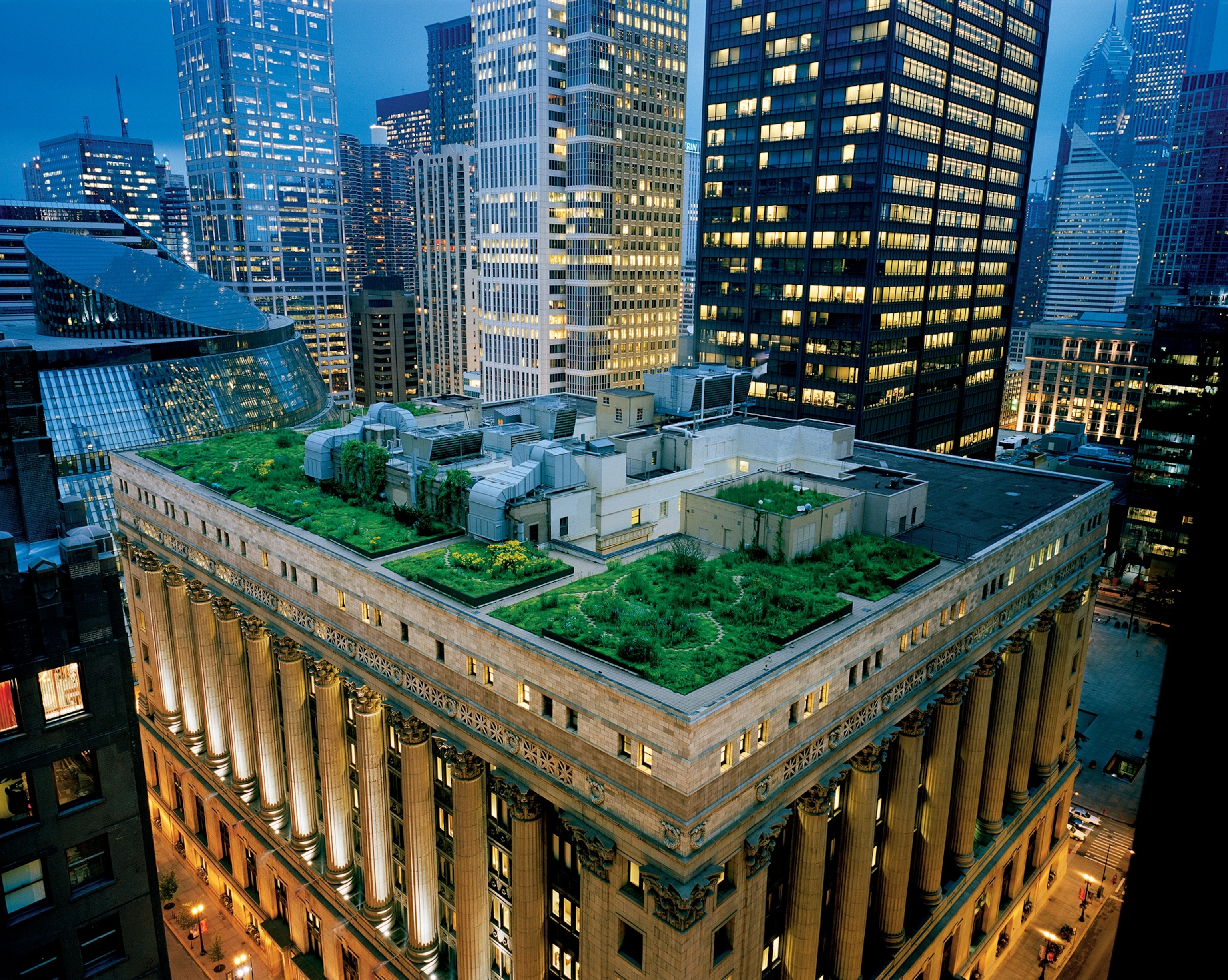
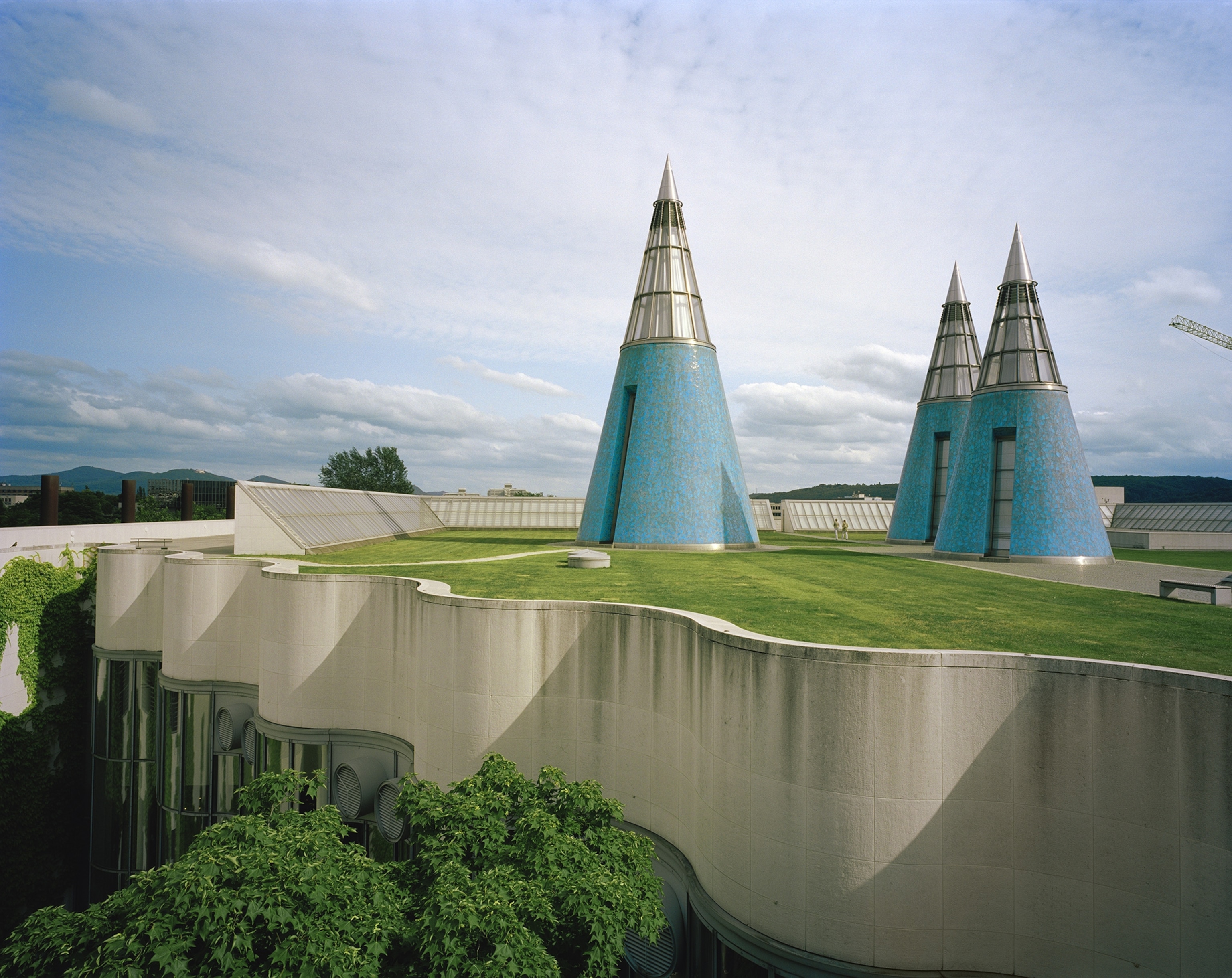
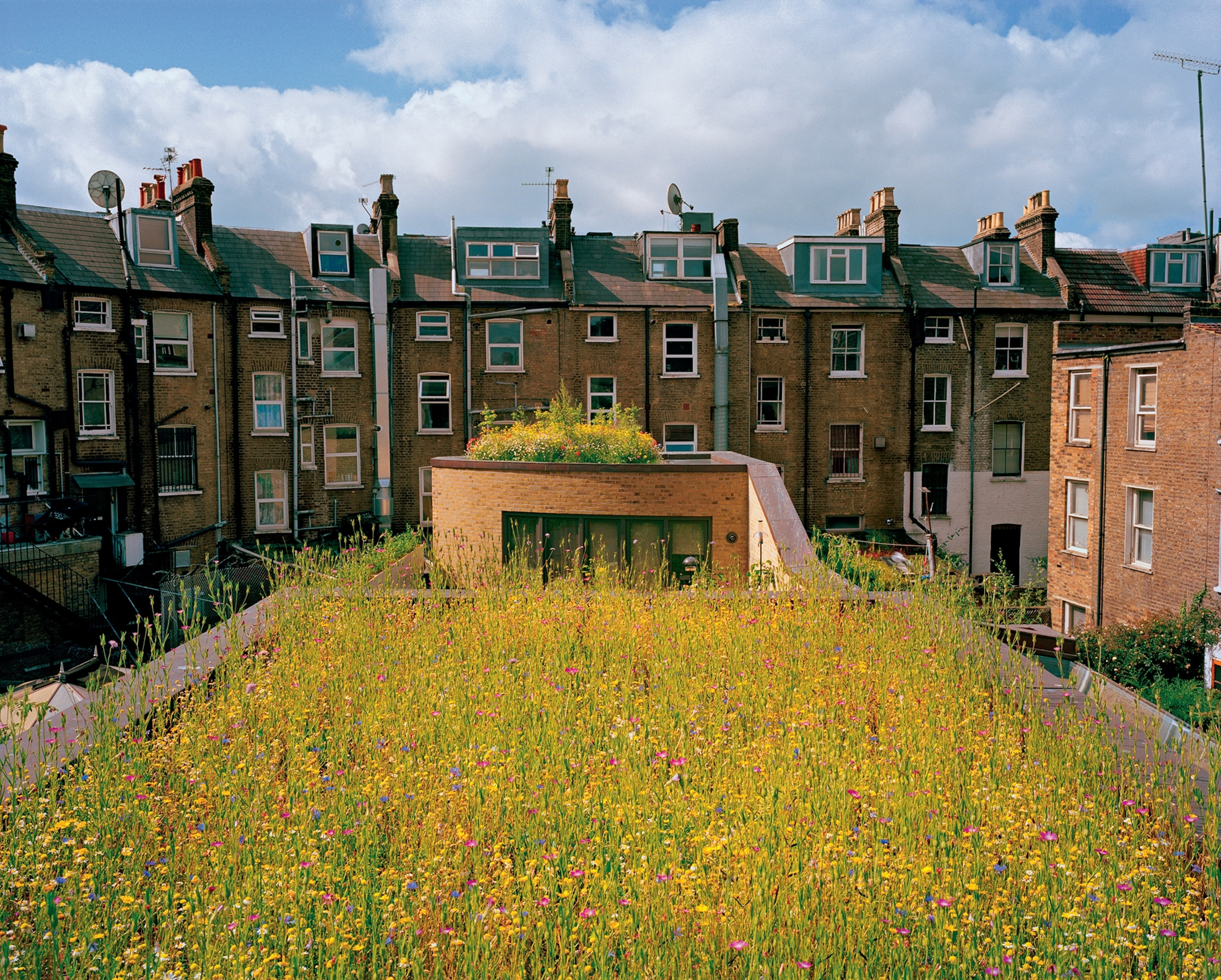

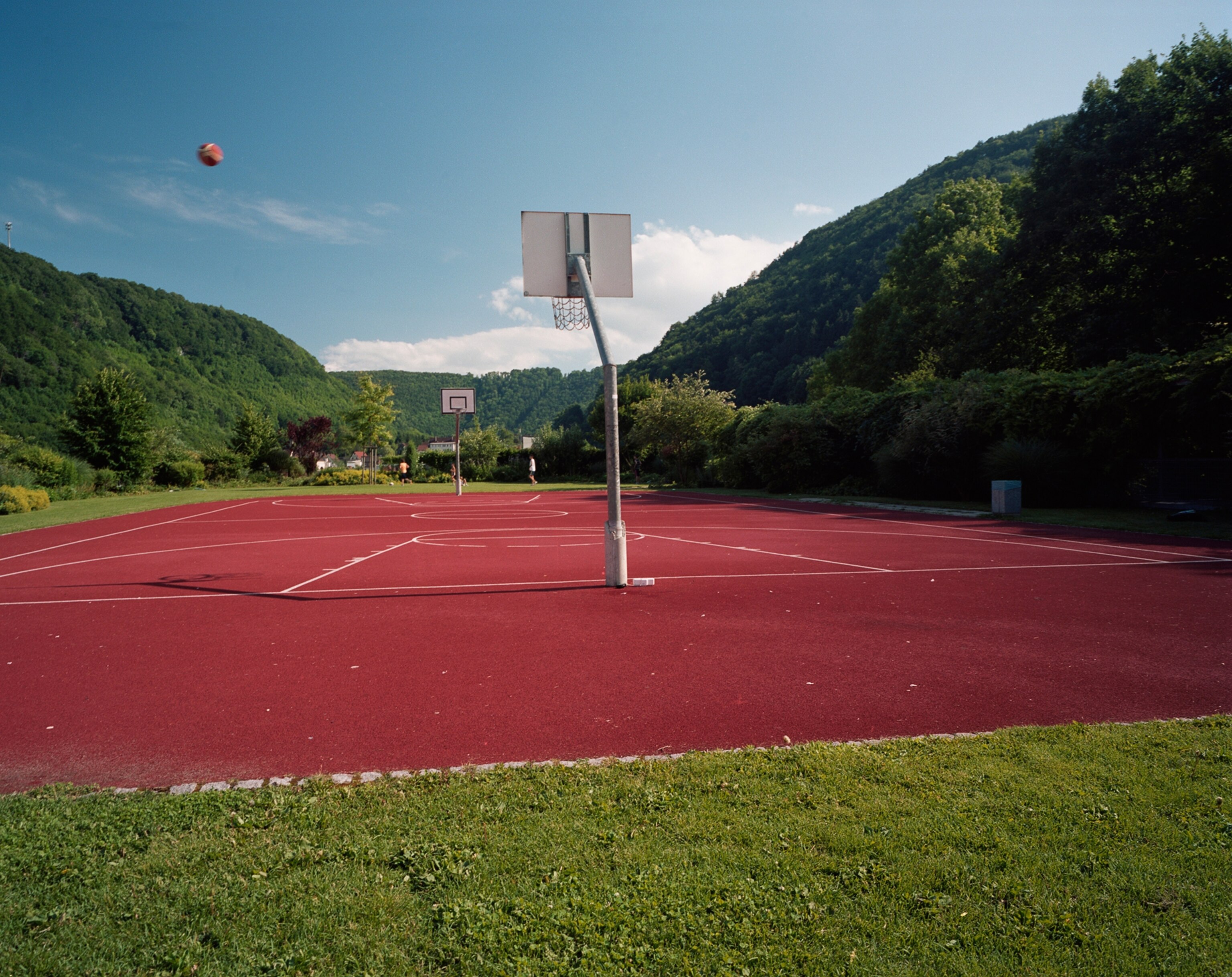
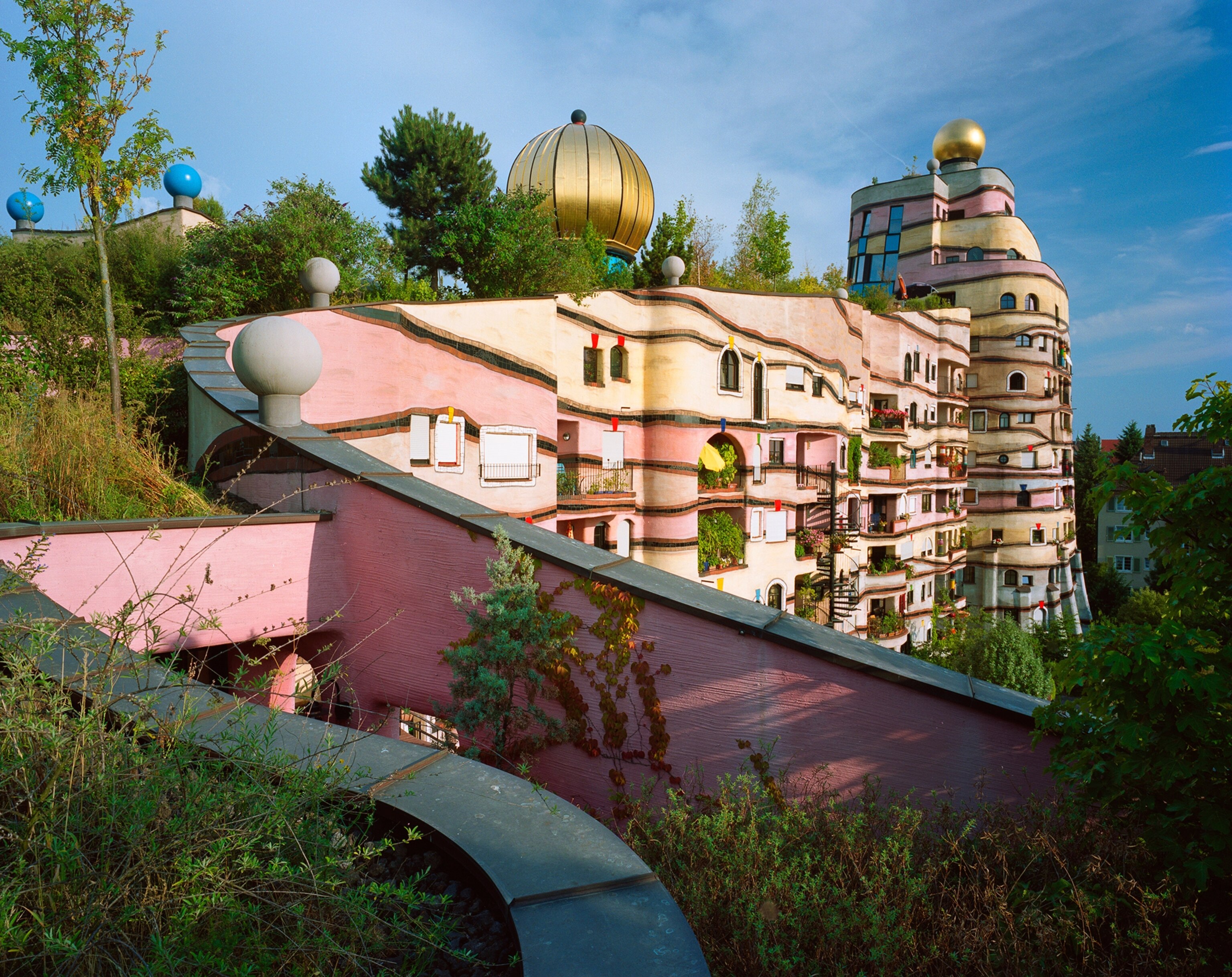

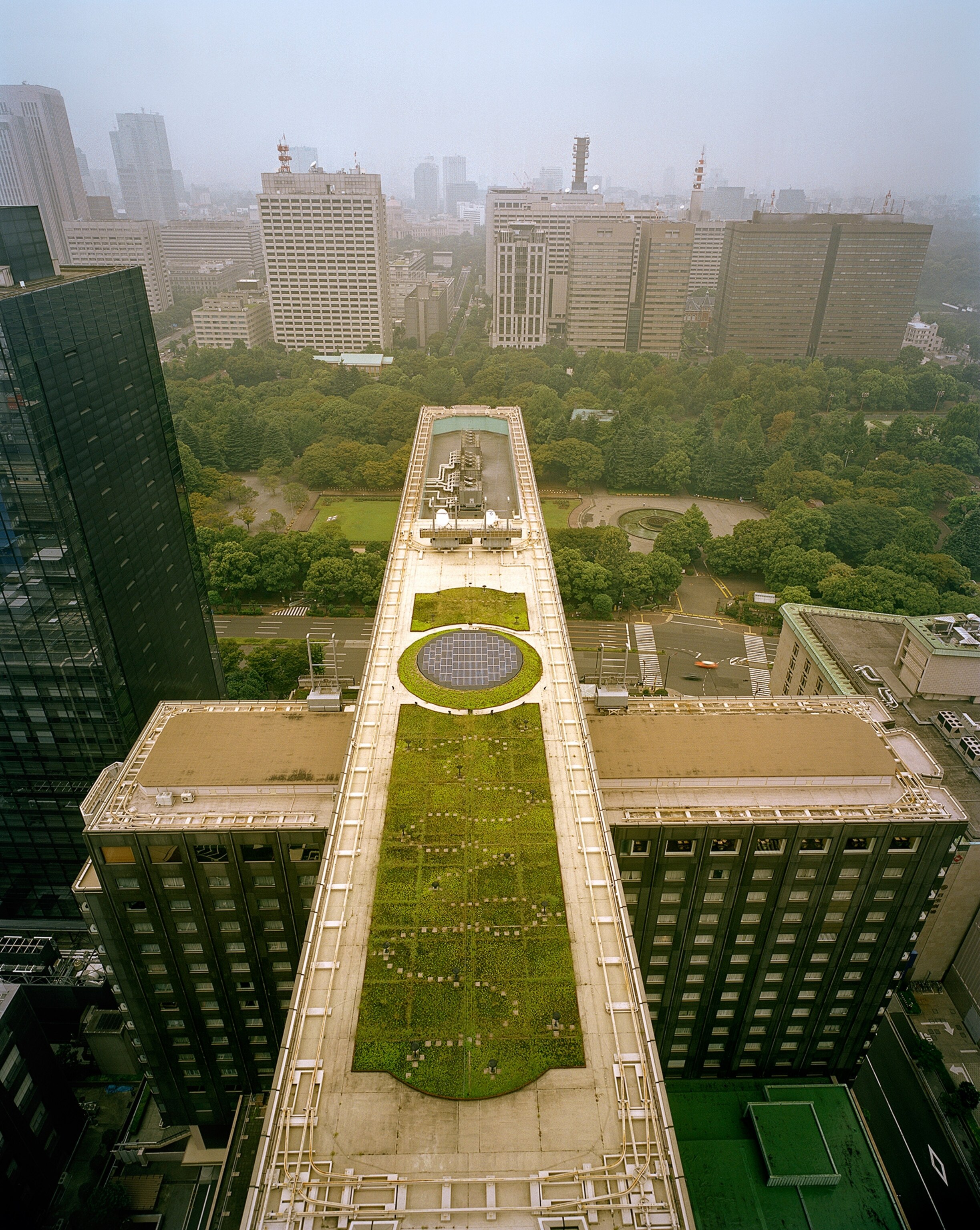

Green Roofs Get Lift as France Makes Them Chic
Roofs bedecked in plants gain popularity as a way to reduce a building's energy use and stormwater runoff.
France, long the world's arbiter of haute couture, is taking aesthetics to a loftier level: the rooftop.
As it spruces up its green portfolio ahead of global climate talks in December, France approved a law last week that requires the roofs of new commercial buildings be covered—at least in part—by either solar panels or plants.
Green roofs have gained popularity in recent years as more cities worldwide promote their use as a way to save energy. Some, including Canada's Toronto or Switzerland's Basel, even mandate rooftop vegetation in building bylaws.
Advocates say these roofs—whether bedecked in sedums, vegetable plants, or wildflowers—help insulate buildings and thereby reduce the need for both heating and air conditioning.
The impact can be substantial. A study this week by Spanish researchers found that dense foliage can reduce the heat entering a building through the roof by 60 percent and act as a passive cooling system.
Green roofs help reduce runoff by retaining rainwater and improve air quality by absorbing pollutants. By taking in more heat during the day than they can release overnight, the plant-covered surfaces can also lower the "heat island" effect in urban areas that are warmed by asphalt roads and tar roofs. (Green walls offer similar benefits.)
In densely-developed cities, they also offer birds a place to nest and people a place to grow food. (In Brooklyn, rooftop garden grows.)
Green roofs cost more to install and maintain, and their price and complexity deter many homeowners and developers. Yet a 2008 University of Michigan study found that their benefits, including a longer-than-average lifespan, more than offset the extra up-front investment.
France, which relies mostly on nuclear power for its electricity, is taking other steps to green its buildings. Last month, the second level of its most iconic structure—the Eiffel Tower—was outfitted with two wind turbines.
Related Topics
You May Also Like
Go Further
Animals
- Charlotte, the 'virgin birth' stingray, has a diseaseCharlotte, the 'virgin birth' stingray, has a disease
- See how billions of cicadas are taking over the U.S. this summerSee how billions of cicadas are taking over the U.S. this summer
- Why are orcas ramming boats? They might just be bored teenagersWhy are orcas ramming boats? They might just be bored teenagers
- These pelicans are starving to death—despite plenty to eatThese pelicans are starving to death—despite plenty to eat
- The world's largest fish are vanishing without a traceThe world's largest fish are vanishing without a trace
Environment
- 2024 hurricane season forecasted to be record-breaking year2024 hurricane season forecasted to be record-breaking year
- Connecting a new generation with South Africa’s iconic species
- Paid Content
Connecting a new generation with South Africa’s iconic species - These images will help you see coral reefs in a whole new wayThese images will help you see coral reefs in a whole new way
- What rising temps in the Gulf of Maine mean for wildlifeWhat rising temps in the Gulf of Maine mean for wildlife
- He’s called ‘omacha,’ a dolphin that transforms into a man. Why?He’s called ‘omacha,’ a dolphin that transforms into a man. Why?
History & Culture
- Think customer service is bad now? Read this ancient complaintThink customer service is bad now? Read this ancient complaint
- The tragic backstory of one of the most haunted roads in AmericaThe tragic backstory of one of the most haunted roads in America
- The missing heiress at the center of New York’s oldest cold caseThe missing heiress at the center of New York’s oldest cold case
- When a people's stories are at risk, who steps in to save them?When a people's stories are at risk, who steps in to save them?
- I wrote this article with a 18th century quill. I recommend it.I wrote this article with a 18th century quill. I recommend it.
- Why this Bronze Age village became known as ‘Britain’s Pompeii’Why this Bronze Age village became known as ‘Britain’s Pompeii’
Science
- How being the oldest or youngest sibling shapes your personalityHow being the oldest or youngest sibling shapes your personality
- Tuberculosis is rising in the U.S. again. How did we get here?Tuberculosis is rising in the U.S. again. How did we get here?
- Are ultra-processed foods as addictive as cigarettes?Are ultra-processed foods as addictive as cigarettes?
- Epidurals may do more than relieve pain—they could save livesEpidurals may do more than relieve pain—they could save lives
Travel
- This sunny German city should top your summer travel list
- Paid Content
This sunny German city should top your summer travel list - 7 things you need to know about European travel this summer7 things you need to know about European travel this summer
- These Algerian communities live in the Saharan sand seasThese Algerian communities live in the Saharan sand seas
- This German city doesn’t exist, according to a conspiracy theoryThis German city doesn’t exist, according to a conspiracy theory




